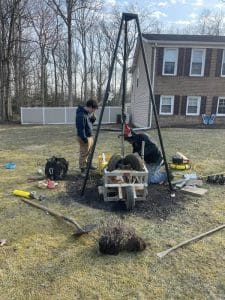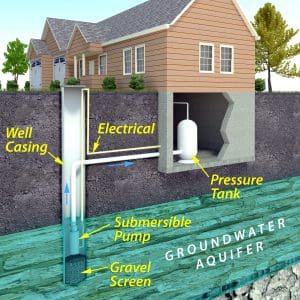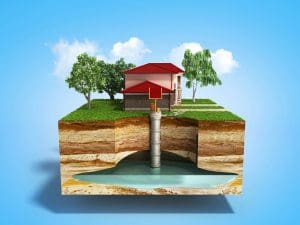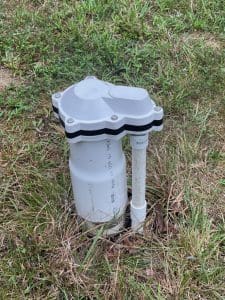 Water well problems can range from mild to severe, including low water pressure, unusual odors, or complete water supply disruption. Typically, multiple factors contribute to these breakdowns. Sediment buildup, pump malfunction issues, and changes in the water table are frequent offenders. Identifying the cause of the problem is the first step in fixing it appropriately and ensuring your well operates at its best. Neglecting regular maintenance and proper installation, as well as ignoring warning signs, can result in costly long-term damage. If you’re experiencing any of these challenges, it’s essential to act promptly to minimize disruptions and maintain a reliable water supply. In this article, we’ll explore common water well problems, their causes, and practical solutions to keep your system in top condition.
Water well problems can range from mild to severe, including low water pressure, unusual odors, or complete water supply disruption. Typically, multiple factors contribute to these breakdowns. Sediment buildup, pump malfunction issues, and changes in the water table are frequent offenders. Identifying the cause of the problem is the first step in fixing it appropriately and ensuring your well operates at its best. Neglecting regular maintenance and proper installation, as well as ignoring warning signs, can result in costly long-term damage. If you’re experiencing any of these challenges, it’s essential to act promptly to minimize disruptions and maintain a reliable water supply. In this article, we’ll explore common water well problems, their causes, and practical solutions to keep your system in top condition.
Key Takeaways
- Ensure you’re familiar with key components of your well system, with a focus on the pump, pressure tank, and pressure switch.
- Be aware of signs of underlying issues, such as decreased flow, low pressure, or cloudy or discolored water. Catch these warer well problems before it’s too late and avoid the expense of repair or replacement.
- Regularly test drinking water for contaminants and invest in infrastructure to ensure the public has access to safe, clean drinking water. Take appropriate steps to follow up with proper filtration or treatment when needed.
- Schedule regular professional inspections to assess the health of components and the overall system. Preventive care can extend a well’s lifespan.
Understand How Well Systems Work
Water wells are complex systems, designed to provide a reliable water supply by pulling water from a vast underground aquifer and delivering it to our homes. Understanding the various issues, such as well pump failure or low water pressure causes, can help homeowners maintain their well water systems effectively and help overcome water well problems.
Basic Well System Components
 The primary components of a well system are the well pump, pressure tank, and pressure switch. The well pump, often submersible for depths up to 400 feet, plays the primary role in lifting water from the underground source. Pressure tanks, typically employing diaphragm bladder designs, help to provide a consistent water flow. They maintain their air pressure between 40 and 60 psi to achieve better performance. This saves wear on the pump by minimizing the frequency of cycling. Pressure switches are used to regulate the air pressure in the tank, maintaining a consistent supply. Regular maintenance, including testing water quality and inspecting hardware, ensures these components function properly, reducing contamination risks and extending the system’s lifespan. This will help overcome water well problems.
The primary components of a well system are the well pump, pressure tank, and pressure switch. The well pump, often submersible for depths up to 400 feet, plays the primary role in lifting water from the underground source. Pressure tanks, typically employing diaphragm bladder designs, help to provide a consistent water flow. They maintain their air pressure between 40 and 60 psi to achieve better performance. This saves wear on the pump by minimizing the frequency of cycling. Pressure switches are used to regulate the air pressure in the tank, maintaining a consistent supply. Regular maintenance, including testing water quality and inspecting hardware, ensures these components function properly, reducing contamination risks and extending the system’s lifespan. This will help overcome water well problems.
How Water Wells Function
 Water supply wells are typically drawn from aquifers, which are underground layers of water-bearing rock or sediment. The pump then draws more water and forces it into the pressure tank, where it’s held until use. Groundwater levels directly impact well performance, with fluctuations capable of instantly stopping the supply. From the storage tank, water flows through pipes to meet the needs of each home, creating an almost invisible cycle.
Water supply wells are typically drawn from aquifers, which are underground layers of water-bearing rock or sediment. The pump then draws more water and forces it into the pressure tank, where it’s held until use. Groundwater levels directly impact well performance, with fluctuations capable of instantly stopping the supply. From the storage tank, water flows through pipes to meet the needs of each home, creating an almost invisible cycle.
Water Table and Well Depth
The water table is the top of the groundwater where the soil or rock is saturated with water. A more extensive well typically taps into more stable water supplies with higher quality. Seasonal fluctuations in the water table can significantly alter its availability. Well depth and location also significantly impact the risk of harmful contaminants, such as septic tank runoff, underscoring the importance of routine inspections.
Common Water Well Problems: Identify Issues
By knowing how to identify common water well problems, you can ensure that you continue to enjoy a reliable source of water. Recognizing the signs early and addressing issues promptly can help prevent costly repairs and provide a clean, safe water supply for your home. Here are the most common issues, along with in-depth information on their causes and how to resolve them.
1. Reduced Water Flow: Recognize Low Yield
A noticeable reduction in water pressure at sinks or tub spouts typically indicates low yield. This may occur due to a dropping water table, inadequate well depth, or a failing pump. For instance, if the pump is struggling to draw water from a shallow well during drought conditions, the flow rate may decrease. First, test to see if the pump is working. After that, examine your pressurized tank and check the well’s water level to figure out if your well is going dry.
2. Pumping Sand or Excessive Sediment
Sediment in healthy water can cause noticeable effects, such as cloudy water and rust stains, as well as damage appliances. Faulty well screens or degraded casing can increase the chances of sand entering your water supply. As time passes, the accumulation of sand can jam the pump or pack the well bottom. What to do about it: Installing a sediment filter or repairing the screen well can reduce these risks.
3. Low Water Pressure: Diagnose Causes
Issues with low water pressure can be caused by clogged pipes, water leakage, or an incorrectly set pressure switch. Appliance demand in modern homes requires more significant pressure to run appliances efficiently. In this case, inspecting and replacing the switch and/or clearing blockages in the plumbing will resolve the issue.
4. High Electricity Bills: Identify Pump Issues to Overcome Water Well Problems
The cost of an overworked pump can add up quickly, resulting in increased energy bills. This causes symptoms of constant running or even increased noise. Simple maintenance, such as flushing the pump and ensuring it’s the correct size, improves performance, reduces costs and greatly helps overcome water well problems..
5. Changes in Water Quality: Be Alert
 If you experience sudden changes in taste, odor, or color, your water has likely become contaminated. Only with routine testing for bacteria, such as E. coli, or chemicals, like nitrates, can you be confident that your well water is safe to drink. Once identified, addressing these issues promptly can help avoid future health risks, particularly in children.
If you experience sudden changes in taste, odor, or color, your water has likely become contaminated. Only with routine testing for bacteria, such as E. coli, or chemicals, like nitrates, can you be confident that your well water is safe to drink. Once identified, addressing these issues promptly can help avoid future health risks, particularly in children.
6. Air Bubbles or Dissolved Gases Present
Sputtering faucets or cloudy water are clear signs of air in the system, often from low water levels. Air appears on faucet cartridges and through cloudy water. It’s helpful to check for leaks from the well depth or pressure tank to determine the source of the problem.
7. Rapid Pump Cycling: Short Cycling Explained
Short cycling, or repeatedly starting and stopping the pump, can wear out the system and cause water well problems. This is usually due to a busted pressure tank bladder. In most cases, replacing the tank or adjusting settings can return your water well to regular operation.
Investigate Well Problems: A Step-by-Step Guide
Getting to the bottom of and making the proper repairs to your well water system is best done with a methodical, step-by-step guide. Here, I’ve broken down easy-to-follow steps for diagnosing and troubleshooting common issues with your well pump, ensuring a reliable water supply and safe operation help overcome water well problems.
Check the Power Supply First
An inadequate power supply is usually the first sign of trouble in any pump. Step 1: Circuit breakers and fuses. The first thing to check is the circuit breakers or fuses that correspond to the well system. Reset tripped breakers or replace blown fuses on your main panel as needed. To confirm that the pump is receiving electricity, check the voltage at the pump with a multimeter. If you’re not comfortable working with electricity, consider hiring a licensed electrician to perform the work safely.
Inspect the Pressure Switch Operation to Avoid Water Well Problems
The pressure switch determines when the pump should be on or off. Erratic pump cycling, failure to start, or loss of flow are all signs of trouble. Clean debris from the float switch, because accumulation may inhibit operation. If the cleaning doesn’t do the trick, replace the switch to bring back reliable operation.
Examine the Pressure Tank Condition
An empty, damaged, or under-pressurized tank will put unnecessary stress on the pump. Check the tank for any exterior signs of wear, corrosion, or leaks. Next, use your standard tire gauge to test the pressure at the Schrader valve located on top of the tank. Monitor and maintain air pressure according to the manufacturer’s instructions. For tanks where bladders have ruptured, replacement is necessary to avoid further damage to the pump.
Evaluating Well Pump Performance
 Watch for signs and sounds. Pay attention to the noises your well head makes—grinding, clicking, or popping generally indicate mechanical failure. Test the flow rate of your water supply to determine which size pump will best meet your needs. If problems persist, seek professional advice and have the issue inspected.
Watch for signs and sounds. Pay attention to the noises your well head makes—grinding, clicking, or popping generally indicate mechanical failure. Test the flow rate of your water supply to determine which size pump will best meet your needs. If problems persist, seek professional advice and have the issue inspected.
Assessing Water Quality Indicators
Check your water for unusual color, smell, or particles. Ensuring that known and potential contaminants do not enter these valuable resources through routine testing is imperative. A broken pump can significantly impact your water quality, so when you experience issues, take prompt action to address them.
Water Quality Problems: What to Do
Detecting water quality issues in your well water systems requires immediate attention to ensure it remains safe for drinking and household use. Preventative measures, including regular testing and a prompt response to test results, enable the quick identification and resolution of any common problems that may arise.
Address Contamination Concerns Safely
The approach to treating tainted water will vary depending on the specific issue. Filtration systems, such as reverse osmosis or ultraviolet (UV) disinfection, are common and effective for removing bacteria. For more serious cases, speak to a licensed contractor specializing in well construction and repair. In some cases, physical cleaning or chemical treatment can be practical tools for remedying poor water quality.
When to Call a Professional
Severe contamination or structural damage to well water systems demands immediate professional attention. Licensed contractors will ensure your well water pump system functions correctly and remains safe for years to come.

Preventative Well Maintenance: Best Practices
Maintaining your well water system is central to any well owner’s goal of providing a reliable water supply of clean, safe drinking water. Preventive maintenance will save you from more expensive repairs related to typical issues, such as well pump failure, and ultimately extend the life of your well pump system. With just a few basic steps and a little diligence and record-keeping, you’ll be able to service your well for many years of efficiency and dependability. We specialize in well inspections at Grove & Sons Well Service & Repairs. In fact, go to our home page and take advantage of our great offer on a well inspection.
Regularly Test Water Quality
Regular and routine water testing is crucial. Annual tests for coliform bacteria and E. Coli through a state-accredited laboratory are a good idea. Routine testing ensures that problems are identified quickly to prevent illness. Establish an annual routine to test common contaminants and track mineral content. For example, testing after a heavy rainstorm can help ensure that no potentially harmful surface runoff has affected your water quality.
Monitor Pressure Tank Health
Inspect the area around your pressure tank for signs of rust, leaks, or bulging. The air pressure should be measured with a gauge to make sure it’s within the manufacturer’s specifications. Tanks that are starting to exhibit severe wear should be replaced as soon as possible to prevent system failure. For instance, a tank with regular short-cycling or low water pressure could be a sign of internal problems.
Address Clogged Filters Promptly
Filters are another common culprit. Clogged filters can diminish flow and, therefore, quality. Watch for warning signs, such as lowered pressure, discoloration, or unusual smells in the water. Filters should be replaced or cleaned regularly, typically every three to six months, for optimal performance.
Schedule Professional Inspections
Inspections by a professional every 10 years will help keep your whole system working great. For one, experts should be able to conduct flow tests, examine for sand pumping, and suggest rehabilitation techniques such as high-pressure jetting, when necessary. Save a comprehensive maintenance calendar and well records for future use.
Protect the Wellhead Area
Keep the area around the wellhead clean by removing vegetation and storing harmful chemicals away from the well. Ensure the well cap is a tight fit and at least one foot above ground level. Landscaping, such as creating a slope in the soil away from the well, allows for proper runoff containment.
Water Well Regulations in Southern Maryland
In Southern Maryland, ensuring proper construction and maintenance of well water systems is a priority due to the region’s reliance on groundwater. Unlike these underground rivers, groundwater here can flow through microscopic pores in sediments or fractures in bedrock, depending on one’s location. To safeguard this crucial resource, numerous regulations and programs exist to direct proper well water pump installation, maintenance, and safety.
Local Permitting Requirements
In Maryland, all water wells must be installed by licensed well drillers. The first step in this process is to make sure you have the correct permits. Installation and maintenance permits ensure that new and existing wells meet safety, health, and environmental standards. For instance, in the Coastal Plain region, prehistoric wells were typically shallow and poorly constructed. Today, deeper artesian wells are needed, those protected by layers of clay that help prevent contamination. Neglecting to comply with permitting regulations may result in significant fines and costly retrofits. It’s always best to consult your local experts before making any changes to your well system.
Water Quality Standards Compliance
Maryland has stringent standards for drinking water quality and safety. Routine testing protects both you and others and is essential for meeting state regulations. The groundwater age can vary dramatically, ranging from a few days to more than a million years old. Routine testing helps detect new contaminants before they can cause significant harm to the public. This is especially the case in areas where recharge to aquifers happens at a very local scale, rendering them more vulnerable to anthropogenic pollutants.
Wellhead Protection Programs
Wellhead protection efforts aim to prevent contaminants from reaching water supply sources. This is where community engagement comes in, as residents have the power to engage on the local level to ensure wells remain safe. Protecting and promoting these efforts is a crucial step toward preserving our vital groundwater resources for future generations.
Conclusion
Water wells are a consistent and valuable natural resource, but when a well has problems, it can be a frustrating experience. Knowing what to look for and how to utilize your time or resources best makes all the difference. Look for signs of an issue and maintain your vehicle regularly. Each action helps keep water clean and systems in good working order. Local regulations and geological factors significantly drive well performance, so knowledge truly is power. Increasingly effective and innovative technologies are streamlining well management, allowing problems to be resolved more quickly. Maintaining a water well safeguards not only the well itself but also the surrounding environment. It helps provide a safe, reliable supply of water for everyday activities. If you have a specific issue or are looking for confidential expert guidance, contact a nearby trusted well professional. Your water is too important to settle for anything less.
Frequently Asked Questions
What are common problems with water wells?
These common issues, such as low water pressure, cloudy or murky water, and pump failure, often stem from mechanical breakdowns, geological shifts, or neglect in well water system maintenance.
How can I identify if my water well has a problem?
Signs of water problems can include unusual smells, tastes, or appearances of well water, turbidity, or low water pressure. If your well water pump runs nonstop or makes odd noises, it likely indicates a mechanical issue.
What should I do if my well water is contaminated?
Avoid using the well water for any purpose other than what is recommended. Have it tested to assess changes in well water quality. Consider using bottled water for drinking and cooking until the issue with the well water system is resolved. Consult with a professional well contractor about potential treatment methods, such as large-scale filtration or other advanced technologies.
How often should I maintain my water well?
Inspect your well water system’s structure annually. Have your well water tested at least once a year for contaminants such as bacteria, nitrates, and pH levels to ensure a reliable water supply and prevent common water problems.
Can geological factors affect my well and cause water well problems?
Indeed, factors such as the type of soil, rock formations, and even shifts in the water table can impact the performance of your well water system. Other natural factors, such as drought or heavy rainfall, can also lead to changes in well water levels.
What are the regulations for water wells in Southern Maryland?
In Southern Maryland, private well water systems require permitting, construction, and regular testing. Review state and local health department guidelines to ensure compliance with all regulations for a reliable water supply.
How can emerging technologies help overcome water well problems?
Smart sensors, remote monitoring tools, and advanced well water systems can all help to realize your well’s optimal performance. These technologies enable them to identify common problems earlier, provide better quality water, and lower their operating costs.


0 Comments